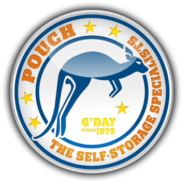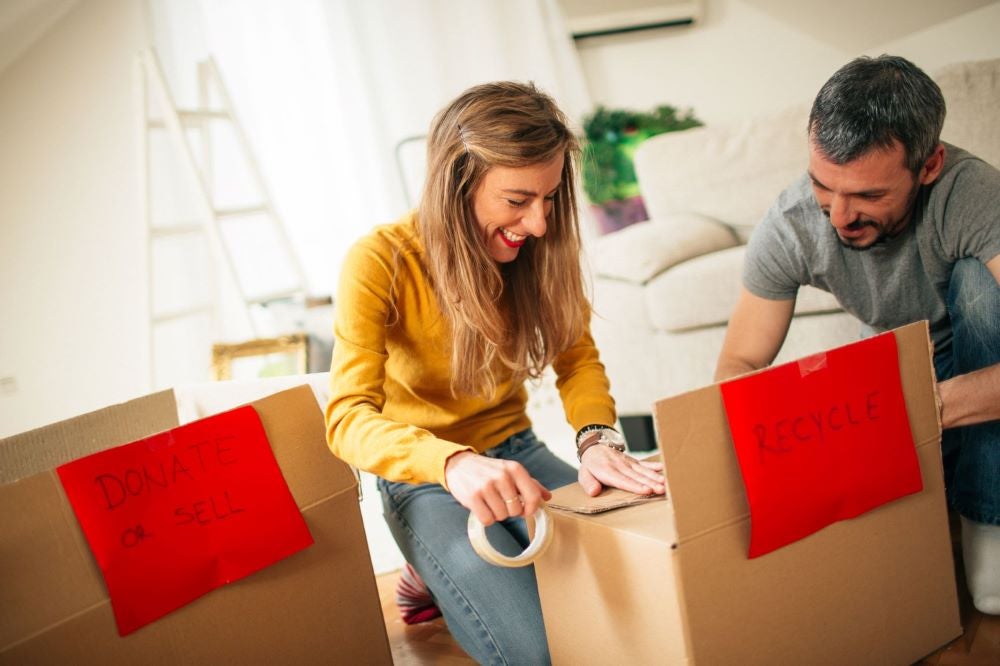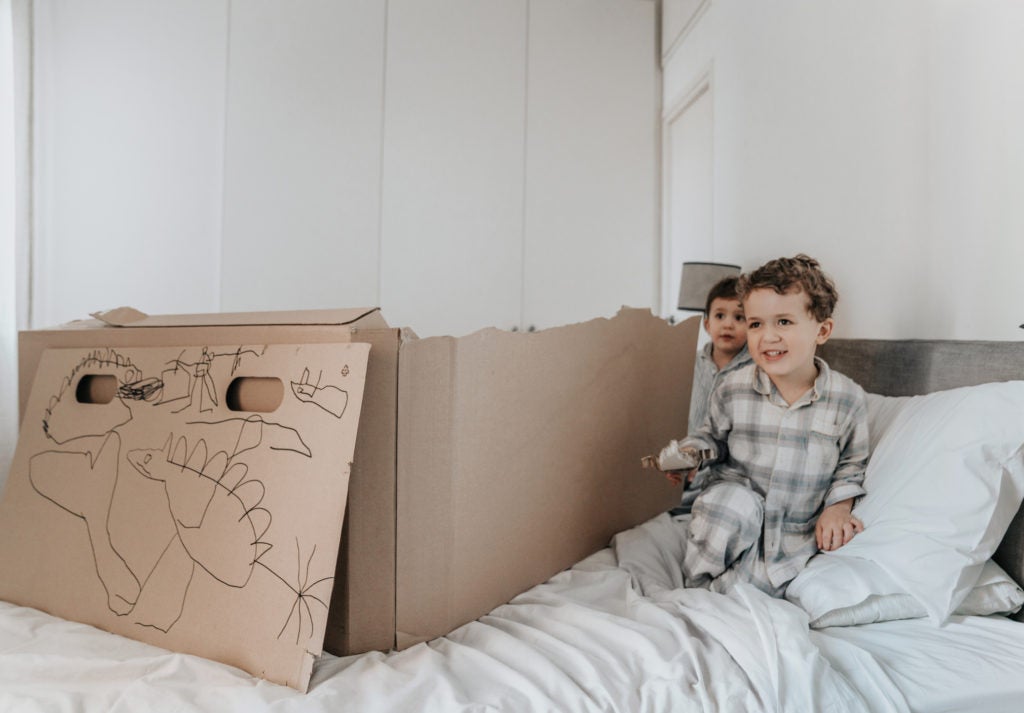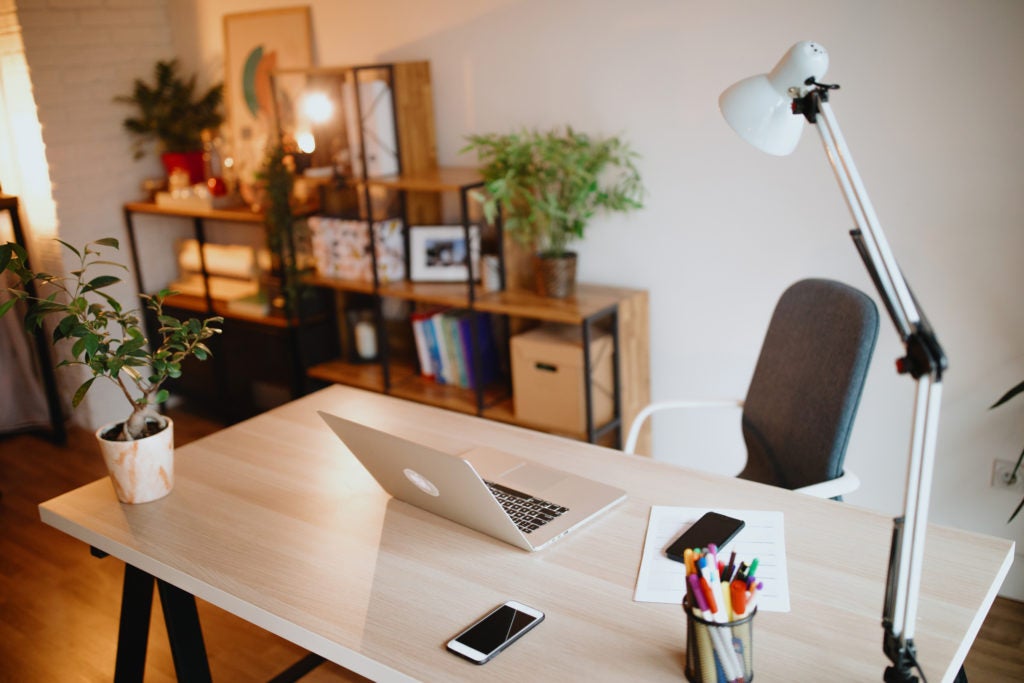-
How to Save Space in a Storage Unit
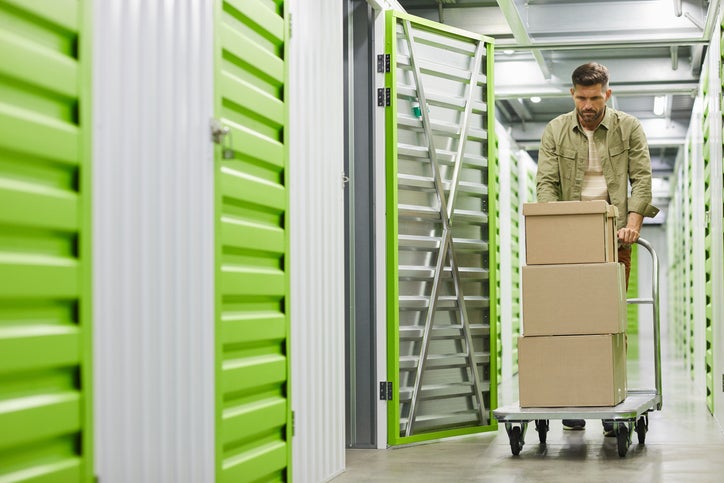
Whether you’re moving or reorganizing, a storage unit can be a very useful tool for keeping your belongings safe while you regroup. If you don’t organize it correctly, though, you can find that your storage unit fills up quickly. Unless you’re ready to upsize your unit, you’ll need some helpful tips for saving space in your storage unit.
- Be smart about renting the unit. Don’t just guess as to the size you need. Rather, have a clear idea of what you’re going to put into your storage unit before you decide on the size of the unit. Make a list of everything you need to store and you’ll not only know how much storage you’ll need but you’ll also have an inventory list to help you keep track of what you’re storing.
- Pack your things correctly before you put them in storage. Clean everything before you store it, washing clothes, wiping down furniture, and cleaning out appliances. Line the bottom of the storage unit with cardboard or wooden pallets. Choose the right containers for everything you’re packing, and know how to properly pack things.
- Pack clothing, neatly folded, in plastic containers with clip-on lids.
- Cover furniture and mattresses.
- Don’t wrap things in plastic, unless it’s bubble wrap, or put tape directly on furniture.
- Remove glass and fragile pieces from appliances or shelves before packing.
- Choose climate controlled storage for appliances.
- Pack electronics in original packaging when possible and take photos of wires before disconnecting them.
- Make stacks. Don’t discount the power of vertical storage! Starting at the bottom, put heavier items on the bottom of the storage unit and stack lighter items on top to get the most out of your unit.
- Disassemble furniture. Take bulky furniture pieces apart to maximize your space. With things that can’t be disassembled, like dressers, store smaller things inside the larger furniture.
- Use shelves to your advantage. Install shelves in your storage unit, either temporarily hanging them from the wall or using large freestanding metal or plastic shelves. Shelves make a good place to store things that are too large or oddly-shaped to fit into a box.
- Leave no space unfilled. Don’t leave any hollow spaces in your storage unit. Look for ways to fit things inside all of the empty spaces so that you can make the most of your space. One exception to the no empty space rule? Leave an aisle just large enough to walk through so that you can more easily access your things.
If you’re ready to store your things, choose Pouch Self Storage. We’ve been operating mini-storage facilities since 1979 and we’re committed to keeping our clients’ belongings safe. Founded by John Yelland, who hails from Australia, Pouch Self Storage is named in honor of the kangaroo’s pouch- nature’s safe and secure storage spot. We’re an industry leader in design, building, and maintenance of self-storage facilities, and we strive to give our occupants the most advanced security systems available. At our nine Southern California facilities, you’ll find state-of-the-art computer monitoring systems that allow our self-storage managers to monitor the opening and closing of every storage unit door, 24 hours a day. Currently, we’re abiding by CDC recommendations and implementing social distancing, but you can still reach us by calling (800) 378-4598 or contacting us through our website.
-
How to Get Motivated for Spring Cleaning
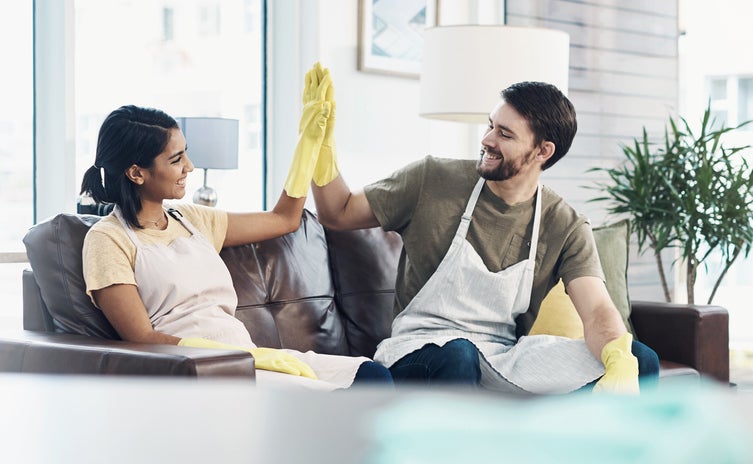
Spring is almost upon us, along with all the great things that come along with it. There’s one thing about spring that may not have you excited, though: spring cleaning. How can you get yourself in the mood to clean and stay motivated until the job’s done? We’ve got some helpful tips.
- Gather inspiration. Go ahead and buy that home décor magazine or build a makeover Pinterest board. Think about the little things you can do to bring the look of your home closer to what you want it to be. Having a vision and some doable mini-projects can make it easier to get excited about cleaning the house.
- Set realistic goals. Rome wasn’t built in a day, and it’ll take longer than a day to clean your whole house. Identify the tasks you want to accomplish and create a schedule for getting them done. It can be disheartening to spend an entire day cleaning, so consider breaking it into smaller blocks of time over the course of a few days.
- Enlist some helpers. Whoever lives in the house should participate in cleaning it, so make a plan for everyone to pitch in. Decide ahead of time how to divide the chores, and make sure you have the right tools to accomplish the tasks you need done.
- Play some energetic tunes. A housecleaning playlist should be fun and upbeat. Creating this playlist isn’t about showing off your highbrow musical tastes, it’s about getting everyone moving! Throw on some disco, some dance party hits, or some bubblegum pop- whatever makes you want to keep going.
- Don’t be afraid to get rid of things. Clothes that you’re not going to wear, things that are broken, outdated knick-knacks or random electronic components can all be removed from your house. Donate anything that’s still in good shape and throw out anything that’s no longer usable.
- Plan something that will motivate you to get the job done. If you’ve got a party on the calendar, you’ll be much more determined to get your house sparkling clean for your guests. It might even compel you to do some of those mini-makeover projects!
- Treat yourself- and your helpers. Plan ahead of time to do something fun as soon as you’re finished. Head out for dinner or ice cream, go to the park, or watch a movie. If you’ve got something to look forward to as soon as you’re finished, the work will go much faster and feel less tedious.
- Consider storage for helping you declutter. An uncluttered home is easier to keep clean, and you can minimize clutter by renting a storage unit. Pull things like kids’ toys in and out of rotation, and store things you don’t use on a regular basis.
Pouch Self Storage has been operating mini-storage facilities since 1979 and is committed to keeping our clients’ belongings safe. Founded by John Yelland, who hails from Australia, Pouch Self Storage is named in honor of the kangaroo’s pouch- nature’s safe and secure storage spot. We’re an industry leader in design, building, and maintenance of self-storage facilities, and we strive to give our occupants the most advanced security systems available. At our nine Southern California facilities, you’ll find state-of-the-art computer monitoring systems that allow our self-storage managers to monitor the opening and closing of every storage unit door, 24 hours a day. Currently, we’re abiding by CDC recommendations and implementing social distancing, but you can still reach us by calling (800) 378-4598 or contacting us through our website.
-
Mental Health Benefits of Decluttering
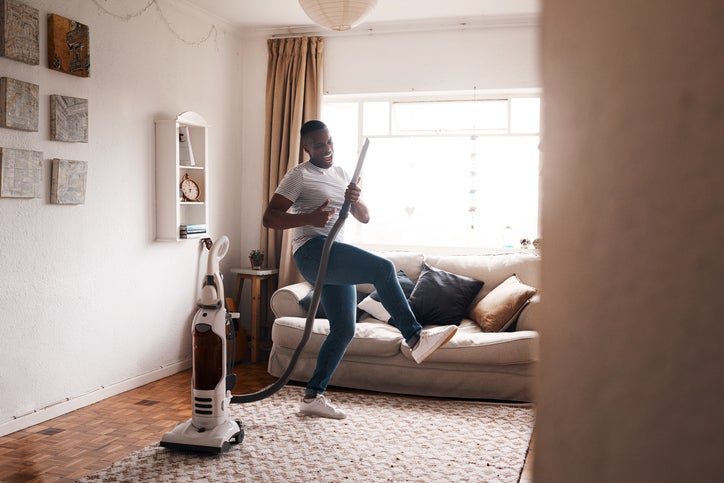
Over the past year, have things gotten a little bit cluttered in your house? It’s happened to a lot of us, as we- and our family members- have spent a lot more time at home. If you’re looking for a way to refresh your space, decluttering is a great first step towards improving your décor. What you may not know, though, is that decluttering can be good for your mental health.
- Clutter can increase your likelihood of depression and anxiety. Our brains are wired to be less anxious when things around us are orderly. In fact, recent research indicates that cluttered spaces create high levels of the stress hormone cortisol, which then causes anxiety and depression. So, when you declutter, you’re alleviating a source of stress.
- Your sleep may improve in a decluttered bedroom. When your home, and especially your bedroom, are cluttered, your mind can be full of uneasy thoughts. This interrupts your sleeping patterns and can result in poor sleep. If you want a good night of sleep, get rid of the chaotic clutter in your bedroom.
- A cluttered house can aggravate your allergies. Clutter conceals contaminants of all kinds, from pet hair and dust to mold and mildew. This makes it a breeding ground for harmful allergens. When you declutter and organize, you can improve your indoor ventilation, which helps prevent mold buildup. You’ll also be able to clean more easily where pet dander and dust have gathered, improving your indoor air quality and alleviating allergic symptoms.
- Getting rid of clutter can improve your relationships. When you share a home, whether with roommates or family members, clutter can put a strain on your communal harmony. Keeping the house clutter-free makes everyone feel happier and prevents fights over messes.
- The act of decluttering is good for your overall well-being. Physically, decluttering requires you to get moving, so it burns calories and can energize you. Mentally, the decision-making and problem-solving skills required in decluttering create a feeling of confidence in your own competency. When you’re decluttering, your mind has space to wander, and that can lead to lightbulb moments that help you with the rest of what you need to do. One more bonus? While you’re decluttering, you will often find things you didn’t even remember you’d lost. In this way, decluttering can reveal lost treasures and ultimately save you money.
Pouch Self Storage has been operating mini-storage facilities since 1979 and is committed to keeping our clients’ belongings safe. Founded by John Yelland, who hails from Australia, Pouch Self Storage is named in honor of the kangaroo’s pouch- nature’s safe and secure storage spot. We’re an industry leader in design, building, and maintenance of self-storage facilities, and we strive to give our occupants the most advanced security systems available. At our nine Southern California facilities, you’ll find state-of-the-art computer monitoring systems that allow our self-storage managers to monitor the opening and closing of every storage unit door, 24 hours a day. You can still reach us by calling (800) 378-4598 or contacting us through our website.
-
How to Pack Oddly-Shaped Items
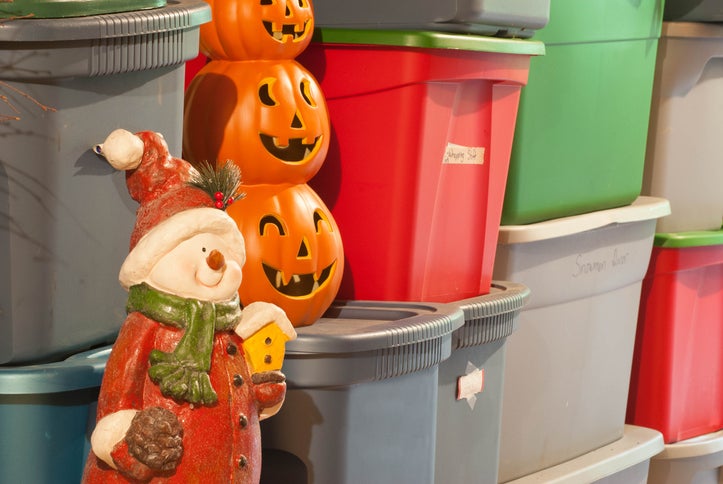
When you think about moving, you probably think of large pieces of furniture and square or rectangular boxes. Boxes are easy to use when you’re packing dishes or books, but what happens when the things you’re packing are oddly-shaped? We’ve got some tips to make packing those less-than-uniformly-shaped objects a breeze.
- First, think through the whole packing process. Make sure you have the right packing materials on hand, including new, sturdy cardboard boxes, strong packing tape, soft packing paper, bubble wrap, foam sheets, and Styrofoam peanuts. It’s also helpful to have things like old towels, sheets, and blankets, to use as padding. Consider where you’ll pack your oddly shaped things. Will they fit in standard boxes or will you need special containers?
- Go overboard with your wrapping. Disassemble things as much as you can, then place cushioning material in hollow spaces and nooks, protect anything that sticks out with bubble wrap, wrap the whole thing in packing paper, bubble wrap, old linens, or foam sheeting, and tape it all together with packing tape.
- Don’t be afraid to waste space in the interest of protecting your treasures. Once you’ve got your specially shaped item wrapped, it’s time to pack it. If it can fit in a box, that’s the best place for it, even if the only box it fits in leaves a lot of extra space around it. That’s fine, just add extra padding into the excess space, after carefully padding the bottom of the box. Make sure the item is completely immobile, and put an additional protective layer of bubble wrap on top before you close the box.
- Create custom boxes when necessary. If you’ve hired professional movers, they’ll often offer custom crating services. If you’re doing it yourself, though, you might have to use some ingenuity to find the right fit.
- If you need an extra-tall box, you can put your item in a tall, sturdy box about half its height, raise the lid flaps of the carton and tape them so that you create an open-topped box. Then put another, similarly-sized box over the top of the item, sliding it down over the bottom carton as far as possible and sealing the two boxes together.
- For an extra-wide box, use a large, rectangular box, with the top taped up. Cut along one of the long sides, removing the cut piece to make an open-sided box. After putting your odd-shaped item into the box, get another box of the same size, tape it shut, cut along a long edge and both shorter edges, creating a flap that can open and close. Sliding the second box over the first will create a wide, sturdy packing container.
- You can also build a box around your item. Flatten a large cardboard box, put the item on top of it, fold the edges of the cardboard around the item, flatten a second box, put it over the item, fold the boxes together and seal.
- In some cases, cardboard won’t cut it. For oddly-shaped items that are particularly delicate, it’s better to use custom-built wooden crates.
- If you’re going to store your items, pay special attention to packing and labeling. You need to be absolutely sure that if your things are stacked in a storage facility, your oddly shaped items will still be protected. Label them clearly with words like “fragile”, “this side up”, and “do not stack” if necessary.
Pouch Self Storage has been operating mini-storage facilities since 1979 and is committed to keeping our clients’ belongings safe. Founded by John Yelland, who hails from Australia, Pouch Self Storage is named in honor of the kangaroo’s pouch- nature’s safe and secure storage spot. We’re an industry leader in design, building, and maintenance of self-storage facilities, and we strive to give our occupants the most advanced security systems available. At our nine Southern California facilities, you’ll find state-of-the-art computer monitoring systems that allow our self-storage managers to monitor the opening and closing of every storage unit door, 24 hours a day. Currently, we’re abiding by CDC recommendations and implementing social distancing, but you can still reach us by calling (800) 378-4598 or contacting us through our website.
-
Steps to Decluttering your Closet
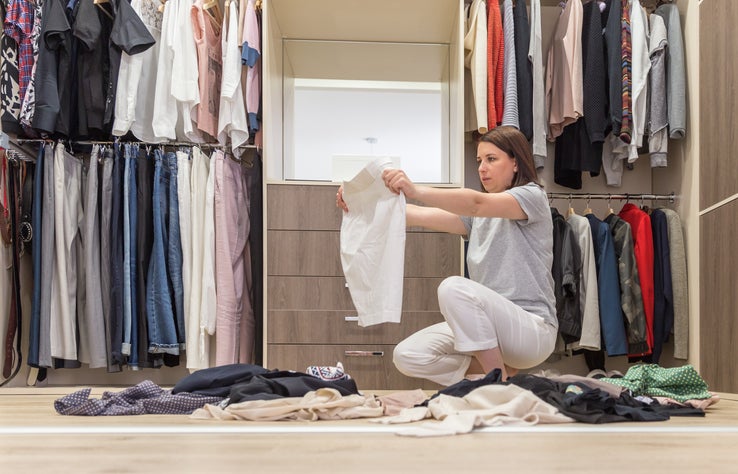
An uncluttered closet makes for an easier life, so why do so many of us find it so hard to declutter our closets? It can be a struggle, but it doesn’t have to be. Follow these simple steps and you’ll soon have a closet that’s neat and organized. Best of all, you can get it done in about fifteen minutes!
- Start with the right supplies. You’ll need three large bags or boxes and a permanent marker for labeling them. One will be for donations and two will be for removing items from the closet for now. If your closet is low on hangers or needs some reconfiguring, go ahead and get new hangers, organizers, or whatever else you’ll need.
- Move quickly to pull out things you’re ready to give away. Anything that doesn’t fit, clothes that you don’t really life, and pieces you never wear can all go into the donations bag. Don’t spend too much time on this, just grab the things you absolutely don’t want to keep.
- Fill the second bag with things that don’t fit, but that you’re not ready to lose just yet. This should be a small amount of clothing, only your favorites among your non-fitting items. Again, don’t get hung up on this. If something feels hard to let go, go ahead and keep it for now. In a few months, go through this bag again and pare it down further.
- Move special occasion items out of the way. Only keep the pieces you actually need and wear, moving them to the far end of your closet.
- Fill the third bag with things you haven’t worn in a year. First, lay them on the bed and be honest with yourself about whether or not you’ll ever wear them again. If you can’t see yourself in them, donate them. If there’s a possibility that they can still work for you, put them in the third bag and label it “maybe”. If you’re on the fence, go ahead and put it in the bag. You can revisit the bag later and donate more things.
- Store the three bags you just filled. Put the donations bag in your car and take it to the thrift store as soon as possible. Don’t hang onto it until you find the perfect recipient, just donate it. Store the other three bags in your closet if there’s room or in a storage area if you don’t.
- If you have more time, set aside an hour to do a more in-depth declutter. Take everything out of the closet, then make essentially the same decisions you made in the fifteen minute process, just more carefully. Find a place for everything so that you can keep it tidy, installing shelves if necessary, to give yourself more organizational options.
- Set yourself up for future success. Make some rules for yourself, to keep your closet from getting cluttered again. Only buy things that will fit, look good, and go with things that you already own. Don’t buy things just because they’re on sale, if they’re not going to make a positive contribution to your wardrobe.
Pouch Self Storage has been operating mini-storage facilities since 1979 and is committed to keeping our clients’ belongings safe. Founded by John Yelland, who hails from Australia, Pouch Self Storage is named in honor of the kangaroo’s pouch- nature’s safe and secure storage spot. We’re an industry leader in design, building, and maintenance of self-storage facilities, and we strive to give our occupants the most advanced security systems available. At our nine Southern California facilities, you’ll find state-of-the-art computer monitoring systems that allow our self-storage managers to monitor the opening and closing of every storage unit door, 24 hours a day. Currently, we’re abiding by CDC recommendations and implementing social distancing, but you can still reach us by calling (800) 378-4598 or contacting us through our website.
-
Tips to Stay Healthy and Avoid Burnout While Working from Home
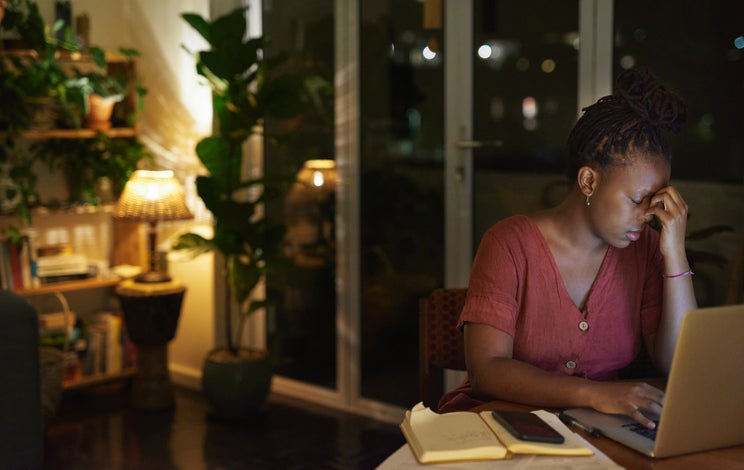
Is working from home wearing you out? This past year has been rough for many people, as they adjust to a “new normal” of working from home and caring for their families at the same time. Unfortunately, it can all lead to burnout. How can you keep from burning out and stay healthy and productive?
- Why do people suffer from work-from-home burnout? Burnout is not a new concept, but the pandemic has made it feel especially hopeless. We’re home so much, trying to maintain normalcy in a world that feels far from normal, and we have no idea when things will change. It all adds up to a level of stress that can be particularly devastating. When people can’t separate their work and home lives, it can lead to work-from-home burnout, because feeling like you’re always “on” can be physically and emotionally exhausting.
- How do you know if you’re heading towards burnout? Everyone is stressed right now, so what makes work-from-home burnout different from run-of-the-mill emotional turmoil and fatigue? Pay attention to these symptoms:
- Physical symptoms like tension, dizziness, fainting, chest pain, headaches, heart palpitations, gastrointestinal pain, or increased occurrence of illnesses
- Losing track of tasks or failing to finish work on time
- Mood changes, including irritability sadness, or anger
- Symptoms of depression like hopelessness, loss of interest in things you normally enjoy, or fatigue
- Feeling apathetic or discouraged in your work
- Having trouble sleeping because of insomnia or having trouble falling asleep
- Drinking more than usual
- If you think you’re suffering from burnout, there are some strategies you can try to help you recover. There’s no magical solution, and different things work for different people, so you might want to try a few of these and see what helps you.
- Find ways to take back control of your life. Some things are out of your control, so take control of what you can. Plan healthy meals and eat them on a schedule. Work at least 15 or 20 minutes of exercise into your day, and plan a bedtime routine that will help you calm down and fall asleep.
- Set some boundaries. Define your work hours and stick to your schedule. Don’t respond to emails or messages during your non-working hours. Take a 15 to 30 minute break in the middle of your work day. Talk to your boss about how you can make some changes that will help keep you motivated.
- Connect with people. It’s easy to feel isolated right now, but human contact is important, so make a point to reach out to others. Talking to someone on the phone might give you just the boost you need. It might also help you to talk to a therapist.
- Do something each day that’s just for you. Step away from your technology and have some “me time” every day. You might take a five-minute break in the morning and afternoon to do a quick mindfulness exercise, taking a few deep breaths and paying attention to your surroundings. Beyond that, though, set aside some time daily to do something you enjoy, like pursuing a hobby or playing with pets.
- You can also set yourself up for success with a better workspace. Physically separating your work and living spaces is ideal, so even if you don’t have a separate home office, make sure you have a dedicated workspace. Keep it tidy, and make sure it’s comfortable and well-organized. Leave your work area for lunch for further delineation.
Pouch Self Storage has been operating mini-storage facilities since 1979 and is committed to keeping our clients’ belongings safe. Founded by John Yelland, who hails from Australia, Pouch Self Storage is named in honor of the kangaroo’s pouch- nature’s safe and secure storage spot. We’re an industry leader in design, building, and maintenance of self-storage facilities, and we strive to give our occupants the most advanced security systems available. At our nine Southern California facilities, you’ll find state-of-the-art computer monitoring systems that allow our self-storage managers to monitor the opening and closing of every storage unit door, 24 hours a day. Currently, we’re abiding by CDC recommendations and implementing social distancing, but you can still reach us by calling (800) 378-4598 or contacting us through our website.
-
Get Organized for the Fall Season
Summer is ending, fall is upon us, and if you’re like many of us, you’re ready to shake things up at your house and get organized. Especially if you’ve spent more time than usual staring at your clutter lately, you may be in the mood for a good fall cleaning and overall purge. That’s a great idea! Here, we offer some tips to help you get organized.
- Come up with a plan. Take stock of your surroundings, set goals, and decide on a date by which you want to be done with this project. Determine exactly what you want to organize, then break the process down into manageable steps and set appointments with yourself to follow through. In your home office, for instance, you might start by organizing one desk drawer, and set a time on your calendar to do the next one.
- Start by decluttering. Get rid of the obvious clutter, like piled up mail or old magazines. Then look with a critical eye at your things, deciding what you actually need and use. Sort your things, and determine what you want to keep, then make sure everything has a home before you move on to the next room. Looking at your wardrobe, for instance, think about summer things you didn’t wear this year and start a donation box. Then put the rest of your summer clothes away in well-labeled storage bins.
- Find simple storage solutions. Store your things in ways that make sense to you, so that you can easily find things when you need them. Fall brings a lot of bulky items, from sweaters and overcoats to large sporting goods, so it’s wise to look for space-saving storage. Save closet space by using cascading hangers and look for creative ways to make the most of the rest of the space in your home. Attractive baskets and bins keep necessary items like boots, gloves, paperwork, and bathroom necessities tucked away so that your rooms don’t become cluttered. Installing drawers in your kitchen can help keep things from getting lost in the recesses of your cupboards and cabinets. Sporting goods can hang on brackets or go neatly into bins, and a craft station hung on the wall can keep supplies attractively organized. Don’t forget to look for ways to use vertical space or the hidden areas under furniture, in corners and nooks, or even behind the bed, for clever storage solutions.
- Find creative ways to store your things. Hang hats on the wall, or put shoes on a display shelf, to use your accessories as art. Choose storage that’s aesthetically appealing as well as practical, like interesting hooks, beautiful baskets, or sleek cabinets. Get creative, looking for new ways to use items. A decorative ladder can be a towel rack, a teacart can hold gloves and hats in the mudroom, or a pretty tray can turn bathroom essentials into an attractive display.
- Stash away the summer. The best way to make room for the new season is by packing away the one that’s just passed. Whether it’s swimwear, beach-themed tableware, summer-themed linens and throw pillows, or out-of-season sporting goods, the best thing to do with things you won’t be using for awhile is to store them.
- Make your routines more manageable. Be sure to store things where they’re easily accessible and conveniently located. Create “stations” to make everything from packing a lunch to sorting the mail to getting out the door in the morning simpler.
- Look ahead to the holidays. Fall is a great time to start getting your home ready for the holiday season. If your guest rooms are cluttered, clear them well ahead of company. Look through your kids’ toys, weeding out those that don’t get much play. It might even be smart to take stock of your holiday items, noting what you already have and getting rid of anything broken before the holidays arrive.
If you’re looking for a safe place to store things until you need them again, look no further! Pouch Self Storage has been operating mini-storage facilities since 1979 and is committed to keeping our clients’ belongings safe. Founded by John Yelland, who hails from Australia, Pouch Self Storage is named in honor of the kangaroo’s pouch- nature’s safe and secure storage spot. At our nine Southern California facilities, you’ll find state-of-the-art computer monitoring systems that allow our self-storage managers to monitor the opening and closing of every storage unit door, 24 hours a day. Currently, we’re abiding by CDC recommendations and implementing social distancing, but you can still reach us by calling (800) 378-4598 or contacting us through our website.
-
What to Do with Leftover Moving Boxes
In the frenzy of moving, it seems like you’ll never have enough boxes to pack all your things. When it’s all over and you’ve unpacked, the pile of empty boxes can seem unbelievably large. What do you do with all that leftover cardboard once you’re settled in your new home? We have a few suggestions.
- Make some money from your used boxes. You can sell your post-move boxes on BoxCycle or in the garage-sale section of Craigslist. The neighborhood site NextDoor is a good place to offload containers, and some moving companies will also buy your gently used boxes.
- Do a good deed with your leftovers. You can also use NextDoor to find neighbors to whom you can donate your boxes, or you can give them away on Freecycle. There’s also Give Back Box®, the service that allows you to use any cardboard box to ship donated goods to a charity for free.
- Repurpose your boxes. Save some of the smaller boxes for shipping things throughout the year, or making returns to an online retailer. You can also find plenty of ways to use the cardboard from your moving boxes around your house. Let the kids build forts, cars, and rocketships, or make temporary beds for your pets. Big pieces of cardboard are also useful in place of drop cloths when you want to protect your floors during a DIY project. Use cardboard as a weed barrier when you create a garden, and as a knee pad when you’re working in that garden. If you think you or someone close to you is likely to move in the next year or two, you might break down some of the boxes and keep them in your garage or self-storage unit.
Pouch Self Storage has been operating mini-storage facilities since 1979 and is committed to keeping our clients’ belongings safe. Founded by John Yelland, who hails from Australia, Pouch Self Storage is named in honor of the kangaroo’s pouch- nature’s safe and secure storage spot. We’re an industry leader in design, building, and maintenance of self-storage facilities, and we strive to give our occupants the most advanced security systems available. At our nine Southern California facilities, you’ll find state-of-the-art computer monitoring systems that allow our self-storage managers to monitor the opening and closing of every storage unit door, 24 hours a day. Currently, we’re abiding by CDC recommendations and implementing social distancing, but you can still reach us by calling (800) 378-4598 or contacting us through our website.
-
Projects to Tackle At Home this Fall
The current pandemic has put us all in a unique situation, with most people staying at home right now. While some are working remotely, it’s easy for people to get restless when there’s nowhere to go and not enough to do. While it’s not a great time to do any major renovations, it’s a good idea to make the most of your time by getting some projects accomplished. You can even order most of your supplies online!
- In the house:
- Consider some crafts. Especially if you have kids, simple crafting is a great way to spend the time. Make things out of duct tape, make your own bath bombs, learn to embroider or knit, or simply color in an adult coloring book.
- Update your décor. Take a hard look at your shelves and see which knick-knacks need to be removed. Makeover an old piece of furniture or paint an accent wall. Paint your bathroom, redo your kitchen cabinets, replace outdated hardware, upgrade your lighting, or just create a plan for your next project.
- Get organized. Clean out a closet, or reorganize your kitchen. Go through your pantry, medicine chest, and bathroom cabinets, tossing out anything expired or damaged. Sort through your books and get some ready to donate, or organize your filing cabinets.
- Clean all the things. Now is the time to polish the silver or the copper-bottomed pans, or waterproof your upholstery. You might want to wash all your windows or give your countertop appliances a thorough cleaning.
- Catch up on your reading. Those books you never have time to read? Now you do! You can also use this time to share some of your old favorite books with your kids, taking turns reading aloud.
- In the yard:
- Boost your curb appeal. Paint your front door, your trim, or your mailbox, plant some flowers around the front door, or replace your shutters.
- Plant a garden. Learn to grow vegetables, or plant your favorite flowers.
- Update your landscaping. It’s a great time to take out those bushes you’ve always hated, lay down a new walkway, put down some mulch, clean your deck, or refresh your outdoor furniture.
- In the garage:
- Tackle the mess. If your garage is a catchall, set aside a few days in a row to take on the task of cleaning it out. Enlist the help of your family, and be sure to do it when the weather is dry since you’ll probably have to drag some things outside.
- Reorganize. Categorize the things you want to store in your garage, and group them into categories. Make sure each item has a logical place so that it can be easily retrieved and stored. Wait until after you’ve organized and determined how you want to store things to purchase storage containers.
- Install new storage. While you have extra time, you might install built-in cabinets or modular storage. You can also use vertical storage like pegboards and wire grids, and if you have overhead space, consider sturdy shelves that mount to the ceiling.
Pouch Self Storage has been operating mini-storage facilities since 1979 and is committed to keeping our clients’ belongings safe. Founded by John Yelland, who hails from Australia, Pouch Self Storage is named in honor of the kangaroo’s pouch- nature’s safe and secure storage spot. We’re an industry leader in design, building, and maintenance of self-storage facilities, and we strive to give our occupants the most advanced security systems available. At our nine Southern California facilities, you’ll find state-of-the-art computer monitoring systems that allow our self-storage managers to monitor the opening and closing of every storage unit door, 24 hours a day. Currently, we’re abiding by CDC recommendations and implementing social distancing, but you can still reach us by calling (800) 378-4598 or contacting us through our website.
- In the house:
-
Organizing your Home Office to Make Working from Home Easier
One result of the COVID-19 pandemic is that many people currently from home. Some people aren’t used to working from home, while others who usually work remotely are unaccustomed to doing so with their roommates or family sharing their space. Staying organized can help make everything a little easier.
When You Already Have a Home Office
If you’ve already got dedicated office space at your house, you’re ahead of the game. Organizing it and keeping it that way should just take a few simple steps.
- Declutter. If you don’t know where to start, choose three things to throw away. Do you have pens that don’t work? Outdated periodicals? Knick knacks that have outlived their usefulness? Get rid of the things standing in the way of your productivity.
- Clean out your files. Start with one filing drawer, weeding out anything unnecessary or outdated. Once you’ve sorted them, decide how you want to organize them. You might put them in alphabetical order, sort them numerically, or color-code them, but whichever system you choose, make sure it’s one that makes sense to you.
- Tidy your desk. Start with the drawers, and if that seems too daunting, start with just one. Rid if of anything unnecessary and fit it with an organizing tray to keep its contents in line in the future. Moving on to the desktop, clear it completely, even moving electronics elsewhere, then clean it and vacuum around it. Sort through everything that had been on the desktop, and only put back the things with purpose. Commit to keeping it pristine for at least a week.
- Set yourself up for success. Organizing your office won’t any good if you don’t have a plan to keep it that way. Establish a system, with an inbox for assignments, bills, letters, and anything else on your to-do list, a file rack for current projects, a trash can, recycling bin and shredder, and a filing cabinet. Make sure your office has plenty of storage, perhaps using bookshelves or cubbies with bins and baskets. Don’t forget to make the most of vertical space as well, utilizing whiteboards, bulletin boards, file systems, and shelving.
Organizing Yourself to Work from Home
Sometimes it’s not about the space as much as it is the mindset. Use these tips to pull yourself together and get ready to work.
- Design a routine. Get dressed every morning, and keep set business hours. Find ways to mentally transition in and out of work. If you usually listen to a podcast on the way to work, for instance, keep this routine, simply listening to it as you get ready to start your day.
- Create a dedicated office space. You don’t have to have a separate room, but you need an area that’s entirely for work, to put you in the right frame of mind.
- Build flexibility into your schedule. Take breaks when you need them, perhaps taking a walk outside or moving around. Let yourself off the hook from time to time, especially if you aren’t feeling well or have a family member who needs you more than usual. That being said, be careful not to let distractions cause too many interruptions in your day, and set a timer when you take a break to keep yourself on track.
- Take care of yourself. Be mindful of your body, sitting in a supportive chair, and using good posture to keep your neck and back aligned. Communicate with your coworkers, and be aware that most people are dealing with unusual situations right now. Pay attention to your mental health, and don’t forget to have a social life, even if it’s done virtually.
When There’s No Room for an Office
Even if you don’t have a home office, you can find a way to carve out a space that will work for you. You may have to get creative, perhaps setting up shop at the end of a hallway or in a corner of a room, but ultimately you probably don’t need much space. A good chair is non-negotiable, but many things can double as a desk, including shelves, a vanity, or even an armoire. In fact, during the current situation, many people have gotten creative, using things as varied as a ladder, an ironing board, and a highchair as desks. Make sure to incorporate storage into your workspace.
If You Have to Share Your Space
When more than one person is working from home, remember to be considerate of each other. Be mindful of your noise-level and courteous of how you share your common space. If you’re having trouble working at the same time, consider implementing a schedule so that you can use the space at different times. Remember, communication is important when everyone needs to get things done.
Pouch Self Storage has been operating mini-storage facilities since 1979 and is committed to keeping our clients’ belongings safe. Founded by John Yelland, who hails from Australia, Pouch Self Storage is named in honor of the kangaroo’s pouch- nature’s safe and secure storage spot. At our nine Southern California facilities, you’ll find state-of-the-art computer monitoring systems that allow our self-storage managers to monitor the opening and closing of every storage unit door, 24 hours a day. Currently, we’re abiding by CDC recommendations and implementing social distancing, but you can still reach us by calling (800) 378-4598 or contacting us through our website.
